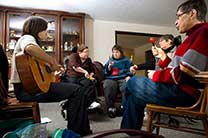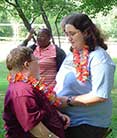What Is a Life Plan?
In addition to writing a letter of intent, you may work with a county board or an organization to create a life plan.
Life plans are part of the self-determination process. The plans are referred to by a variety of names, including Essential Lifestyle Plans (ELP), MAPS, and PATH.
The introduction of life plans evolved as part of the “Person-Centered Planning Process” movement. The resulting plans are focused on what is really important to a person, including goals, preferences, and lifestyle.
The system’s “life plan” for your child covers only what the system sees as important. You need to develop a life plan for your child that encompasses his or her entire life. Most people are familiar with the Individual Service Plan (ISP) through the county boards of DD. These plans vary in content. They can be specific to one area of a person’s life, such as education (IEP), or they can cover all of the service needs of an individual. However, the ISPs often address only those areas of support provided by the county or private agency. In most cases, they do not include a great deal of history or background information on the individual with the disability.
That is why the life-planning process was developed. Life planning often includes all of the people who are important to an individual. Sometimes a facilitator helps guide the group in the process of planning creatively for what the person wants and needs in the future.
Most people who go through the life-planning process find it to be very positive. The resulting plan serves as an effective tool and a good resource for future support providers. The results of this planning can be included in a Life Plan Notebook which contains a wealth of information about the child involved.
Creating The Life Plan Notebook
The Life Plan Notebook serves two important purposes.
- It provides information about your child for the time when your or other caregivers are gone.
- If you or caregivers are temporarily or unexpectedly unable to provide for your child, due to an accident or other crisis, other people will know what needs to be done until the situation returns to normal.
A Life Plan Notebook can be just a simple binder, or digital folder, organized with all the important information about your child.
What to Include:Make sure your child’s support network is familiar with the notebook’s contents and where it’s kept. Like the letter of intent, update regularly.
- Emergency instructions on the first page, even if they are repeated in the letter of intent
- The letter of intent or life plan
- Copies of important documents such as birth certificate, Social Security card, and Medicaid, Medicare, and other insurance cards
- Include notation as to where the original documents are stored
- Copies of guardianship orders or durable powers of attorney
- Financial documents, such as life insurance policies, investment funds, or trust documents
- Any other information that may be helpful to a person stepping in as caregivers.
- The current IEP if attending school
- Work plans and evaluations if receiving vocational supports
- Medical or therapy evaluations













